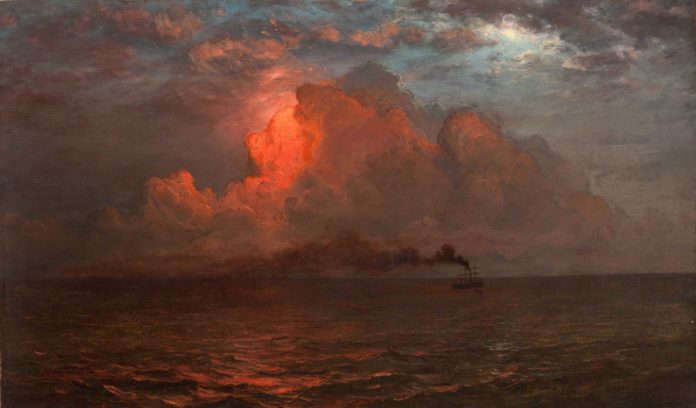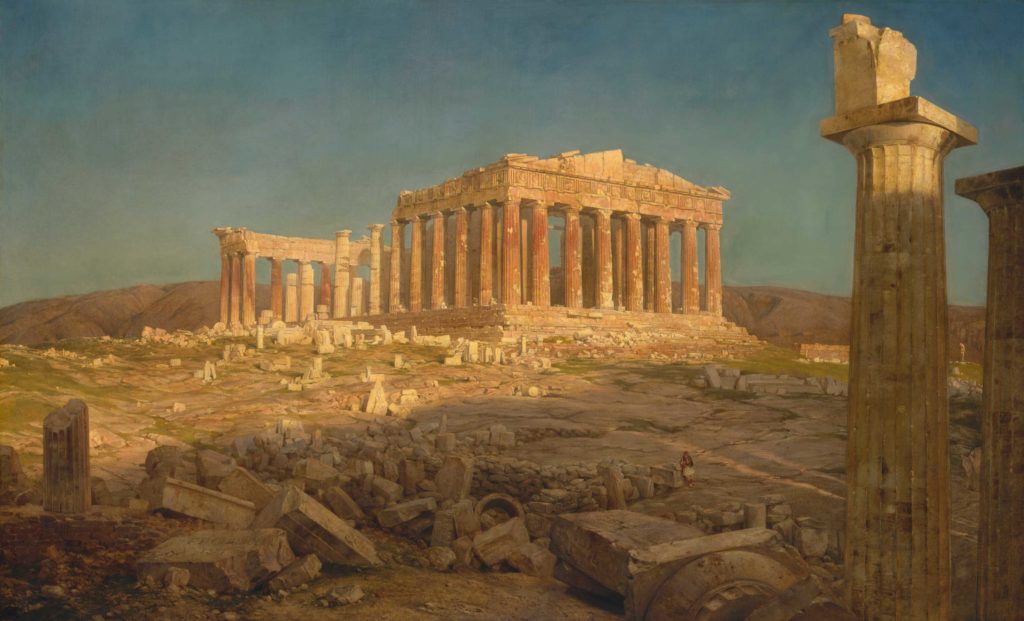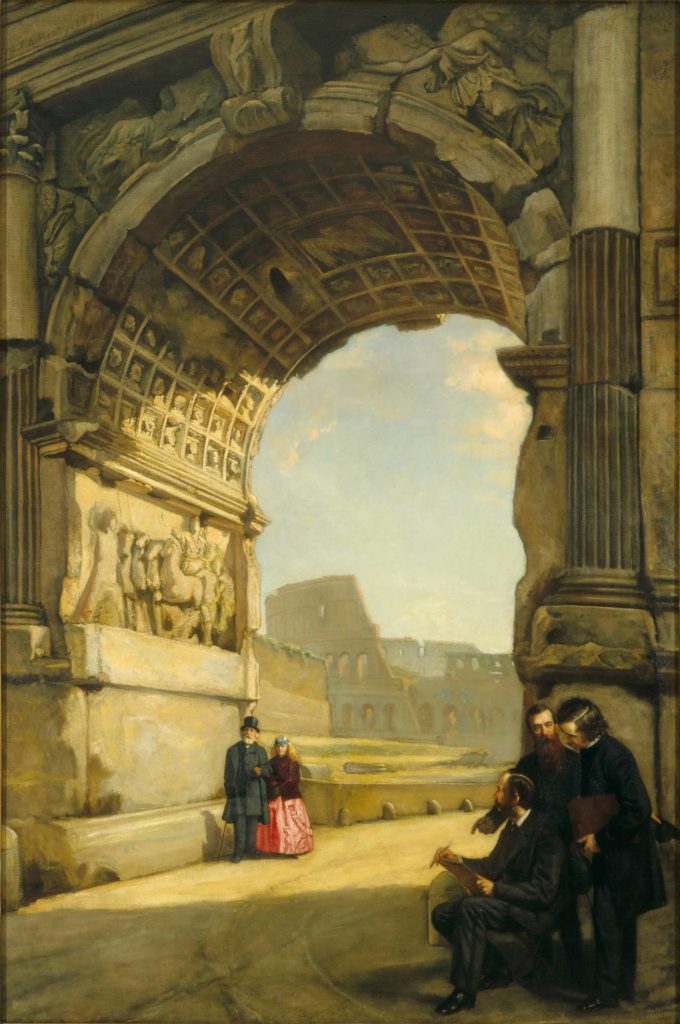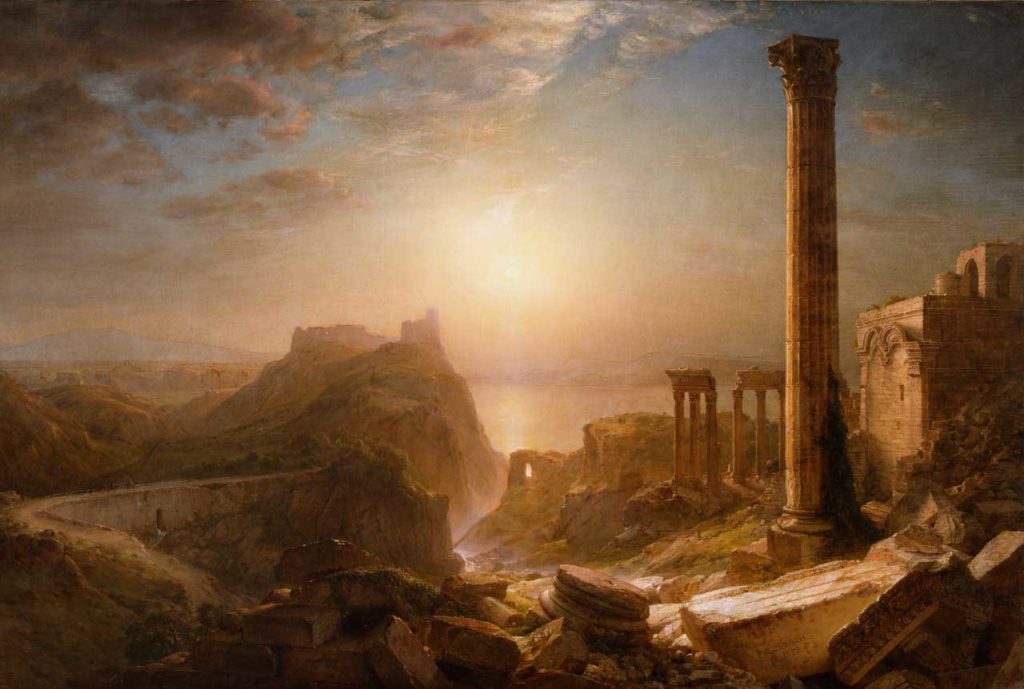
Frederic Church: A Painter’s Pilgrimage
Through May 13, 2018
Reynolda House Museum of American Art (Winston-Salem, North Carolina)
From the museum:
The exhibition is the first to explore the American artist’s paintings inspired by his travels to ancient sites in the Middle East and the Mediterranean. More than 50 paintings, oil studies, and drawings from the late 1860s through the early 1880s will be on view.

A popular artist in mid-nineteenth-century America, Frederic Edwin Church (1826–1900) took landscape painting to new heights of grandeur and was best known for his large, visually stunning paintings of American scenes, as well as views of South America, the North Atlantic, and the Caribbean. But from 1867 until the end of his life, many of Church’s most important paintings represented ancient cities or buildings that he saw during his 1867–69 trip to the Middle East, Rome, and Athens.

While Church’s paintings of the New World focused on the natural world, his works from the Old World explored human history. The exhibition brings together nearly all of Church’s most important paintings of the Mediterranean region and Holy Land in order to explore this major shift in his artistic practice.

“All of the work in the exhibition was created after Church observed firsthand some of antiquity’s most extraordinary cities, buildings, temples, and ruins,” says Allison Perkins, director of Reynolda House Museum of American Art. “The exhibition juxtaposes pencil drawings and oil studies that Church completed during his trip with paintings he completed back in his studio.”
Like this? Click here to subscribe to PleinAir Today,
from the publishers of PleinAir Magazine.



